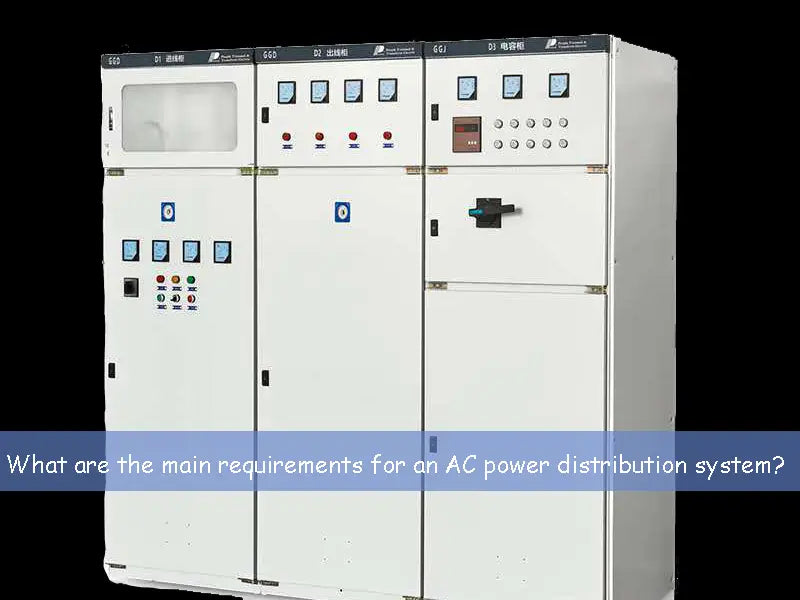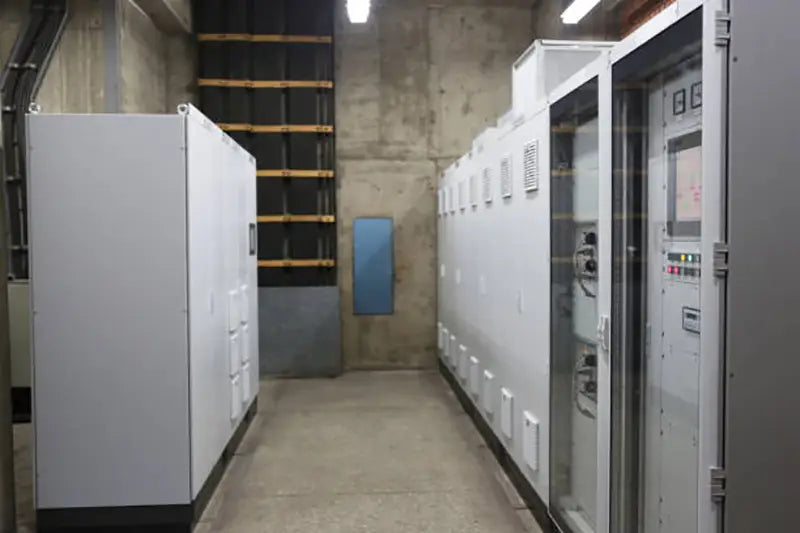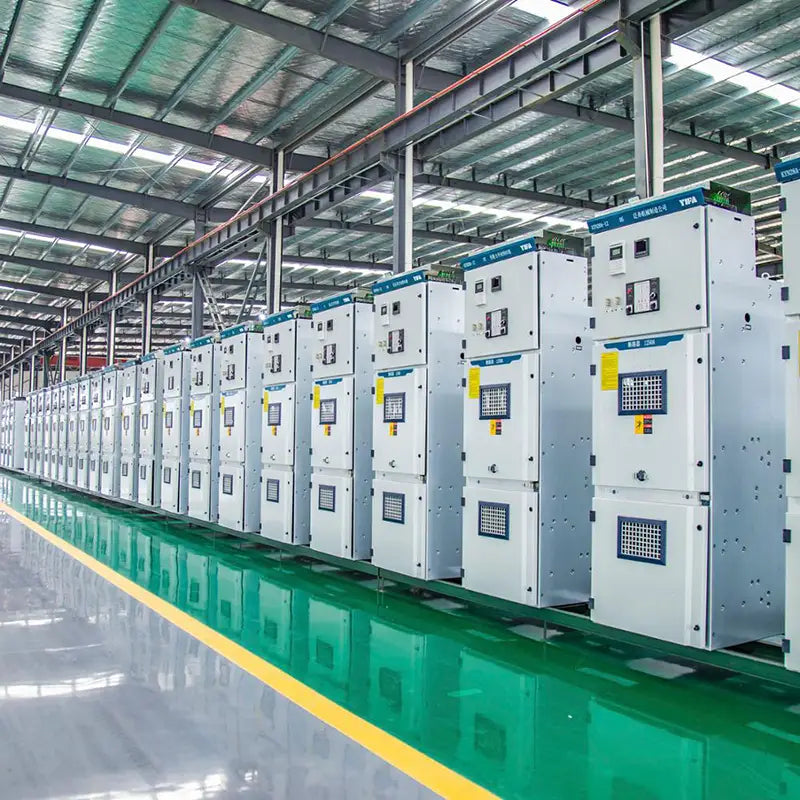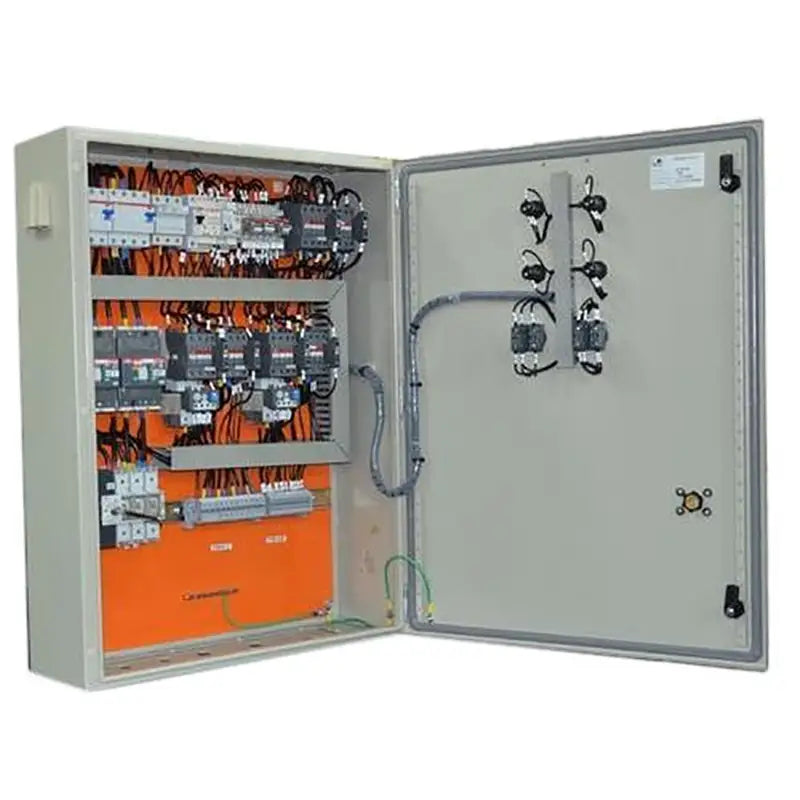
Main content:
1. General requirements for AC power distribution system
(1) AC power distribution system has accurate action and reliable operation;
(2) In the event of a fault, the AC power distribution system can cut off the accident current accurately and quickly to avoid the expansion of the accident.
(3) When working at a certain operating frequency, the AC power distribution system has a high mechanical life and electrical life;
(4) The performance of the electrical components of the AC power distribution system in terms of electrical appliances, insulation and machinery can be coordinated;
(5) The AC power distribution system is safe to work, easy to operate, and easy to maintain;
(6) The AC power distribution system is small in size, light in weight, good in craftsmanship and low in manufacturing cost;
(7) The energy consumption of the AC power distribution system equipment itself is small.

2. Technical requirements for AC power distribution system
(1) Choose mature and reliable equipment and technology. The PGL type low-voltage distribution panel that conforms to the national technical standard can be selected. This is a systematic design product for low-voltage distribution lighting of power plants and substations with AC 50Hz and rated working voltage not exceeding 380V. In order to ensure the reliability of the product, mature and reliable electronic circuits are used in the secondary control loop of the primary charge distribution.
(2) Fully consider the natural environment conditions in Tibet. According to the technical regulations on electrical products, the use environment of low-voltage electrical equipment is usually limited to below 2000m above sea level, while most of the photovoltaic power stations in Tibet are located above 4500m above sea level, far exceeding this regulation. The main climatic features of high altitude geographical environment are low air pressure, high relative humidity, large temperature difference, strong solar radiation, and low air density. With the increase of altitude, the atmospheric pressure and relative density decrease, and the outer dielectric strength of electrical equipment also decreases. Therefore, when designing an AC power distribution system, the adverse effects of the local harsh environment on electrical equipment must be fully considered. According to the relevant national standards, the AC power distribution system should be installed in electrical equipment with an altitude of more than 1000m (but not more than 3500m).

3. Structural requirements of AC power distribution system
(1) Heat dissipation. High-altitude areas have low air pressure, low air density, and poor heat dissipation conditions, which have a great impact on low-voltage electrical equipment. It is necessary to leave a large margin in the design capacity to reduce the temperature rise during operation. Taking into full account the environmental conditions in Tibet, according to the above design requirements, the AC power distribution system has a certain margin for the selection of low-voltage electrical components in the design to ensure the reliability of the system.
(2) Maintenance and repair. The AC power distribution cabinet should be an open double-sided maintenance structure, which is made of thin steel plates and angle steel welded together. There is a small door that can be opened in front of the cabinet, and there is a dashboard above the cabinet, which can be equipped with various indicating instruments. In conclusion, the AC power distribution system should be easy to maintain and repair.
(3) Ground. The AC power distribution system should have a good grounding protection system. The main grounding point should generally be welded on the skeleton below the cabinet. The instrument panel should also have a grounding point connected to the cabinet, thus forming a complete grounding protection circuit for reliable reliability. to prevent the operator from being electrocuted.
4. Protection function of AC power distribution system

The AC power distribution cabinet should have a variety of line fault protection functions. Once the protection action occurs, the user can handle it according to the situation, remove the fault, and restore the power supply.
(1) Output overload and short circuit protection. When the output current has a short circuit or overload and other faults, the corresponding circuit breaker will automatically trip and disconnect the output. When there are more serious faults, the circuit breaker can even be blown. At this time, you should first find out the cause, remove the fault, and then switch on the load.
(2) Input undervoltage protection. When the input voltage of the AC power distribution system drops to 70%~35% of the rated voltage of the power supply, the input control switch automatically trips and cuts off the power; when the input voltage of the AC power distribution system is lower than 35% of the rated voltage, the circuit breaker switch cannot Close power transmission. At this time, the reason should be found out, so that the input voltage of the power distribution device is increased, and then the power supply is restored. When the AC power distribution system uses the inverter to input power, it has the function of battery transformer protection. When the battery is discharged to a certain extent, the controller sends a signal to cut off the load, and controls the action of the load relay in the AC power distribution system to cut off the corresponding load. When power is restored, just push a button.
(3) Input interlock protection. The most important protection of the AC power distribution system of the photovoltaic power station is the double interlocking protection of the two-way input relay and circuit breaker switch. The interlock protection function is that when only one channel of the inverter input or diesel generator set input has electricity, the other channel relay cannot be closed, that is, the button operation fails. That is to say, the circuit breaker switch interlock protection allows only one switch to be closed and energized. At this time, if the other circuit is also closed, the two circuits will be disconnected and powered off at the same time.
Read more: Classification and characteristics of inverters for photovoltaic power generation systems